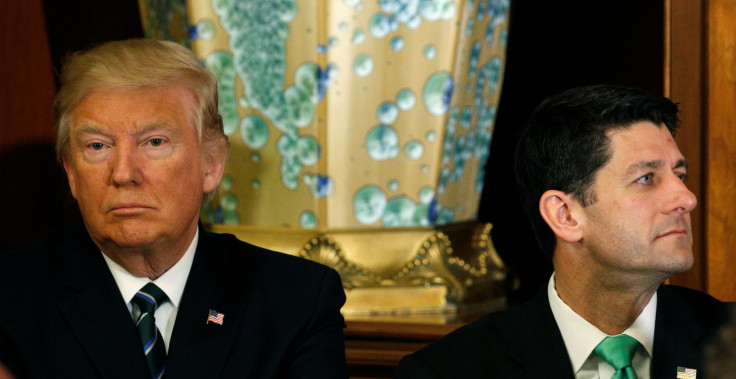Will The Government Really Shut Down? Republicans And Democrats Gear Up For Spending Fight

Fresh off the failure of a bill to repeal and replace the Affordable Care Act, the Republican-dominated Congress and White House appeared to be on track for a new legislative debacle Tuesday—one month ahead of a deadline to raise the federal budget limit, or face a partial government shutdown.
With 11 working days left before the April 28 deadline, House Appropriations Committee Chair Jennifer Hing reportedly said the committee would be putting forward a bill to raise the debt ceiling by April 24. But President Trump complicated matters with a slew of budget requests sure to face opposition from Democrats, many of whom have vowed to use threats to block the budget measure as a bargaining chip to stop the White House’s initiative.
Read: Government Shutdown Can Happen If Enough Republicans Oppose Trump’s Border Wall Plan
The White House recently requested, for example, reductions in funding for medical research, community development grants and infrastructure—funding for which Trump pledged $1 trillion on the campaign trail—the Associated Press reported Tuesday. The drawdowns were intended to cover the costs of emergency spending for the remaining months of fiscal year 2017, which ends Sept. 30, as outlined in a March 16 letter from Trump to House Speaker Paul Ryan.
In the letter, Trump’s administration asked for $30 billion in military funding to “accelerate the campaign to defeat the Islamic State,” along with $3 billion for the Department of Homeland Security to “fund efforts to plan, design and construct a physical wall along the southern border” and “increase immigration detention capacity.”
Democrats generally favor domestic spending over military spending, but some, like Senate Minority Leader Chuck Schumer of New York, expected Republicans to oppose the funding requests, as well.
“It’s got a big problem that Republicans in border states are opposing — Texas, Arizona — because there’s eminent domain, so you have to take private land,” Schumer said Sunday on ABC News. “My prediction: It wouldn’t get the votes on either the Democratic or Republican side.”
Many Republicans, such as Rep. Tom Rooney of Florida simply wanted to avoid another embarrassment for the GOP on Capitol Hill.
“Shutting down the government when you are a Republican Congress and a Democrat is in the White House was one thing. You could chalk that up to a disagreement between the parties,” Rooney told the Wall Street Journal Monday. “But when you control the House and the Senate and the White House and shut down the government—there is no excuse for that at all.”
Read: Government Shutdown 2017: Will Trump Go To War With Congress Over Border Wall, Military Spending?
From Oct. 1 to 16, 2013, an effort led by then-freshman Sen. Ted Cruz, R-Texas, to halt the Affordable Care Act closed down federal agencies, as well as national and state parks—albeit without freezing Social Security payments and veteran hospitals—by blocking the passage of a bill to raise the limit on the government’s debts. Prior to that event, Congress had shut down the federal government 17 times since today’s budget revision process had been implemented in 1976.
© Copyright IBTimes 2024. All rights reserved.






















